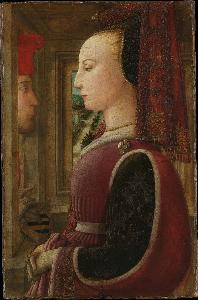Workshop Of Fra Filippo Lippi
Workshop Of Fra Filippo Lippi
Place: Florence
Death: 1469
Biography:
The Workshop Of Fra Filippo Lippi was a painting workshop led by the Italian Renaissance master Fra Filippo Lippi. The workshop was active in Florence and later in Spoleto, and was known for producing high-quality artworks in the early Renaissance style. Fra Filippo Lippi was a Carmelite priest and a skilled painter who taught many painters, including Sandro Botticelli and Francesco di Pesello (called Pesellino). His son, Filippino Lippi, also studied under him and assisted in some late works.
Artistic Style and Influences
The Workshop Of Fra Filippo Lippi produced a variety of artworks, including frescoes, altarpieces, and devotional paintings. Some of the most famous works produced by the workshop include the frescoes in the choir of the cathedral of Prato and the Adoration of the Magi (Fra Angelico and Filippo Lippi). The workshop's style was characterized by a shift towards naturalism, perspective, and anatomical accuracy, as well as a focus on individual expression and emotion.
Notable Works and Artists
Some notable works produced by the Workshop Of Fra Filippo Lippi include:
- Christ as the Suffering Redeemer (Castelvecchio Museum, Verona, Italy)
- Portrait of a Woman with a Man at a Casement (The Metropolitan Museum of Art, New York City, United States)
- Vision of St Augustine in his Cell (Galleria degli Uffizi, Florence, Italy)
The workshop also influenced other notable artists, including Sandro Botticelli and Francesco di Pesello (called Pesellino). Filippino Lippi, the son of Fra Filippo Lippi, also studied under him and assisted in some late works.
Legacy and Impact
The Workshop Of Fra Filippo Lippi had a significant impact on the development of Renaissance art. The workshop's focus on naturalism, perspective, and anatomical accuracy helped to establish the foundations for the High Renaissance style. The workshop's influence can be seen in the works of other notable artists, including Sandro Botticelli and Leon Battista Alberti. For more information on the Workshop Of Fra Filippo Lippi, visit https://Wikioo.org/@@/Workshop-Of-Fra-Filippo-Lippi. You can also learn more about the artist's life and works on Wikipedia. Key artists and styles associated with the workshop include:
- Fra Filippo Lippi
- Sandro Botticelli
- Francesco di Pesello (called Pesellino)
- Filippino Lippi
- Early Renaissance style
- Naturalism and perspective
The Workshop Of Fra Filippo Lippi played a significant role in shaping the artistic landscape of the Renaissance, and its influence can still be seen today.




